Email marketing has come on in leaps and bounds in the past few years.
Whereas it used to be super spammy, today it’s… Well, sometimes it’s still super spammy. But often it’s smart.
Smart list segmentation. Smart—and striking—imagery. Smart, eye-catching calls to action (CTAs).
Yet despite all the advances we’ve made, one thing remains true. Often, a well-written email with nothing but plain text will outperform one packed full of fancy visual elements.
I love words so I may be biased. But this isn’t just my opinion—it’s backed up by cold, hard evidence.
A few years ago, HubSpot carried out a bunch of A/B tests to understand the types of emails that are most likely to drive engagement and click-throughs. In every single case, the simpler-designed email won.
In other words, email copywriting matters. It mattered yesterday, it matters today, and it’ll matter tomorrow.
If you need a little inspiration, here are nine email copywriting best practices to keep in mind for your next email campaign.

Table of Contents
2. Don’t Overlook Your Preview Text
3. Go Beyond Surface-Level Personalization
4. Speak to Benefits, Not Features
5. Avoid Jargon Like the Plague
7. Remember Who You’re Writing For
1. Focus On the Subject Line
Subject lines seem like an obvious place to start.
While you naturally want to nail every element of your marketing emails, from the introductory copy at the top to the CTA at the bottom, some elements are more equal than others.
In particular, if you’re going to pay a little extra attention to any single part of your next email, make it the subject line. It’s often the difference between someone clicking your email or completely ignoring it.
But what does a quality subject line actually look like?
Fortunately, there’s plenty of research out there to show us what works best. Try this for starters:
- The ideal subject line runs to seven words, with an average character count of 41.
- Personalized subject lines are 26 percent more likely to be opened.
- Using emojis in subject lines drives a 56 percent increase in unique open rates.
These should give a good place to start. But remember to split test your subject lines to find out what works best for your audience.
2. Don’t Overlook Your Preview Text
Okay, so it’s perhaps not all about the subject line. Your preview text is super important too.
The email preview copy is like a meta description on search engine result pages. It gives us a sneak peek of what’s “inside”, which makes it an extremely useful tool in convincing people to click.
For reasons that aren’t entirely clear to me, preview copy is often a lot more prominent on mobile than desktop (although it depends on which email client you’re using). For instance, here are five of the most recent emails I received on desktop Gmail:

And here are those same emails on iPhone:
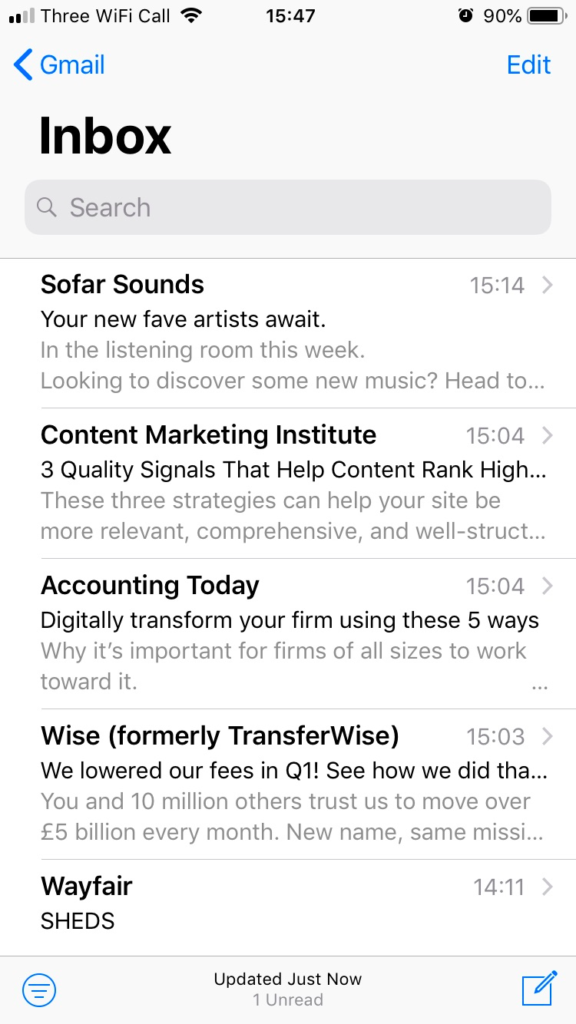
My point here is that preview text is always important—but that it’s even more important if most of your email list prefers mobile.
So how do you write the perfect preview copy?
Confusingly, there are no concrete rules on length, as character counts vary across mobile and webmail, and also from one email client to another. However, in general:
- Mobile preview text ranges from 30-80 characters; and
- Webmail preview text runs from 40-120 characters.
My advice here would be to think of your preview text as a continuation of your subject line. When you make a claim or describe an offer in the subject line, back it up and add more detail in the preview.
If your readers think it sounds relevant, they’ll open your email. And best of all, because you’ve given them a good idea of what to expect, they’re more likely to click through to your site.
3. Go Beyond Surface-Level Personalization
I’ve already spoken about personalization in the context of email subject lines. But your personalization work isn’t finished at the subject line. You need to carry it on in the body copy of your email, too.
By personalization, I definitely don’t mean adding a “Hi, {first.name}” tag at the top of your email and calling it a day.
To truly personalize your emails, you should be speaking directly to your readers as individuals, referencing their specific pain points and goals. Make it sound like you’re writing just for them, not for a whole database full of contacts.
Let’s take a look at how Zapier does this:
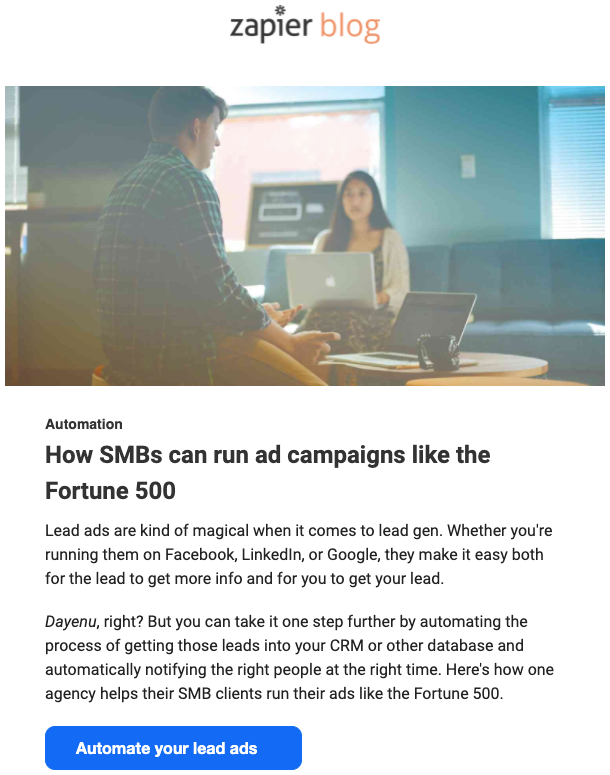
This is some excellent targeting. Sure, Drip isn’t a tiny business, but we’re no Fortune 500 yet, so hitting us with SMB content is spot on.
Plus Zapier knows that pretty much every business in our space wants to generate leads—and that managing those leads can be a real headache.
In other words, this email copy example speaks to a real-world pain point that’s highly relevant to me (and, of course, to lots of other businesses). It proves that Zapier understands one of our biggest pain points and that it has the perfect solution to help us overcome it.
4. Speak to Benefits, Not Features
We all receive a lot of emails. In fact, by 2022, the average person is expected to receive 333 business and consumer emails a day.
This means that if I’ve taken time out of my busy day to open one of your emails, I want to know straight away that I made the right decision. That it was worth my while.
What’s the best way to do this? By referencing the benefits you offer, not banging on about all the fantastic features of your product.
See how Etsy gets this right:
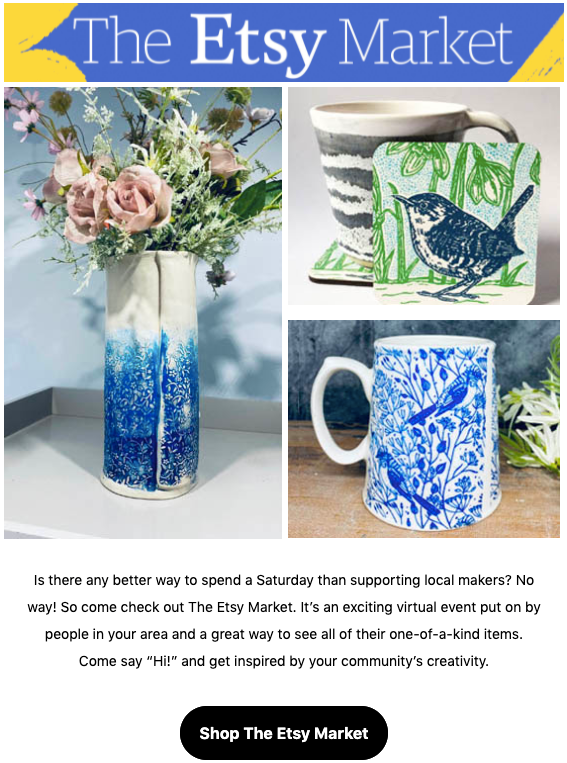
In less expert hands, this email could easily have read something like: “We’re running a virtual event with makers in your area, register here.”
Instead, Etsy clearly sets out the benefits of attending this event. Not only do I get to support local makers (which makes me feel good about myself), but I also get to find out about all the fantastic products they sell.
5. Avoid Jargon Like the Plague
Jargon is the enemy of high-quality email copywriting.
Even if your product is super technical, you’re not going to compel anyone to take action unless you communicate in a way that’s easy to understand and enjoyable to read.
Continuing my last point, the best (and easiest) way to do this is by focusing on the specific benefits of your product, rather than getting bogged down in all the complicated things it does.
How can it save me time or money? How does it make my life better?
For a few pointers on what this looks like, check out this email from Capital One:
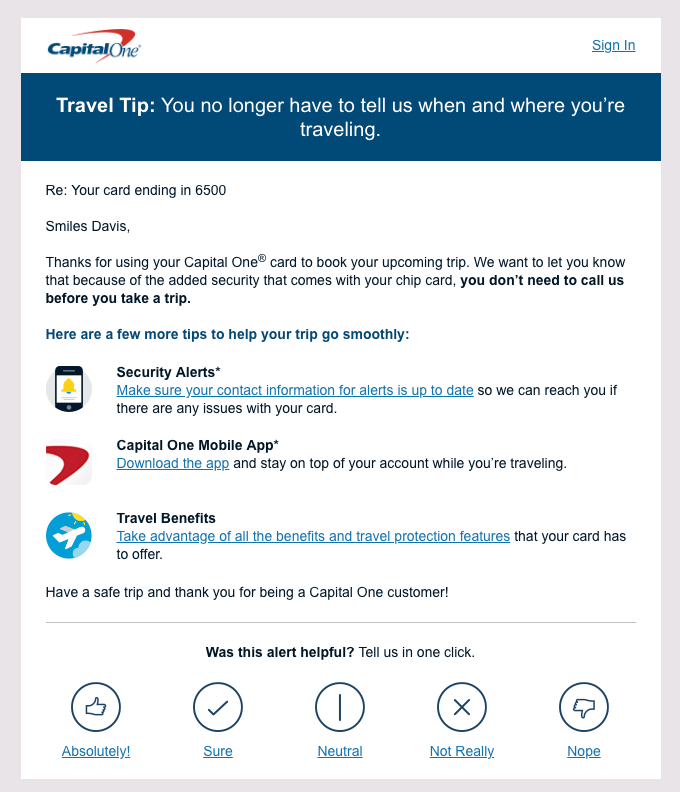
Source: Really Good Emails
That email could have been extremely dull. A real snoozefest. But by speaking to a pain point—someone who’s just booked a trip and wants to use their credit card while they’re away—it’s actually informative, engaging, and actionable.
6. Keep it Short and Simple
My entire article is about the importance of words in emails. But that doesn’t mean the best emails are those that contain the most words. When it comes to email copywriting, quality beats quantity every time.
Put another way, stop trying to tell the whole story in your emails.
When was the last time you read every word in a marketing email? Have you ever done it? Probably not. More likely you pick out the key points and decide whether to click through to find out more.
As a marketer, that’s exactly what you want to happen. Your goal isn’t to get people to spend as long as possible reading your emails; it’s to provide an engaging summary that persuades them to take some sort of action.
Look at how Asana does this:
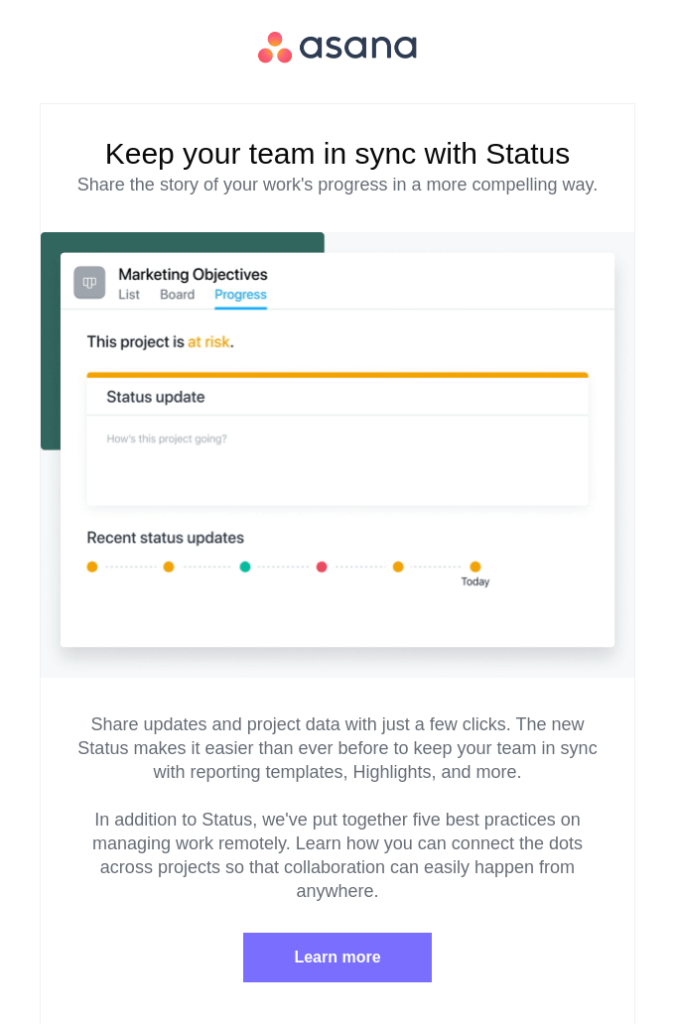
Source: Really Good Emails
Rather than providing a detailed breakdown of exactly how its product helps “keep your team in sync”, Asana offers two short paragraphs of copy followed by a CTA.
To give yourself the best chance of replicating this approach, start by figuring out the one key point you’re trying to make. Once you’ve defined this, it’s much easier to write a concise, focused email.
7. Remember Who You’re Writing For
If you treat email marketing as an opportunity to tell your audience how brilliant you are, you’re doing it wrong.
It’s not about you—it’s about your reader.
You’re reaching out to them because they’re a potentially valuable customer and you want to engage them. After all, they’re worth it, right?
With that in mind, focus on writing in the second person. The words “you”, “your”, and “yours” are your best friends here. Cycling brand Rapha gives us a great example of this in action:
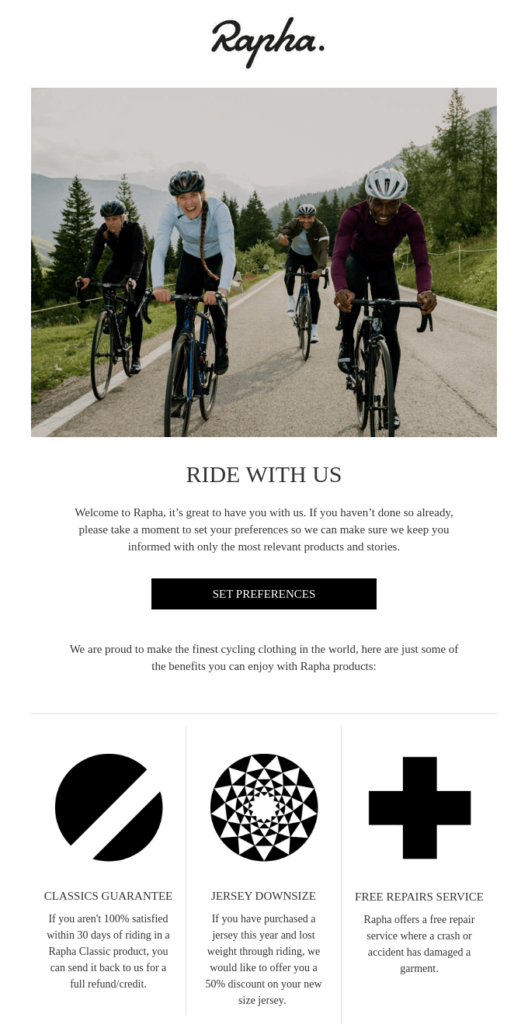
Source: Really Good Emails
In about 170 words, they’ve included “you” and “your” 11 times. That’s about 6.5 percent of the copy, which is a pretty high proportion.
I’m not going to tell you to go away and start adding up all the second-person pronouns in your email copy. There’s no magic number here.
But by keeping your reader in mind at all times, you should find your copy is naturally angled toward them (and away from you).
8. Stick to a Single, Clear CTA
Similar to point #6, less is often more when it comes to CTAs.
Cramming your emails full of CTA buttons probably won’t result in more clicks. If anything, it’ll make people less likely to click, because your email will look confusing and unfocused.
Build your email around one clear call to action. That way, your readers understand exactly what you’re asking them to do next.
Cat Caboodle shows us exactly how to do this:
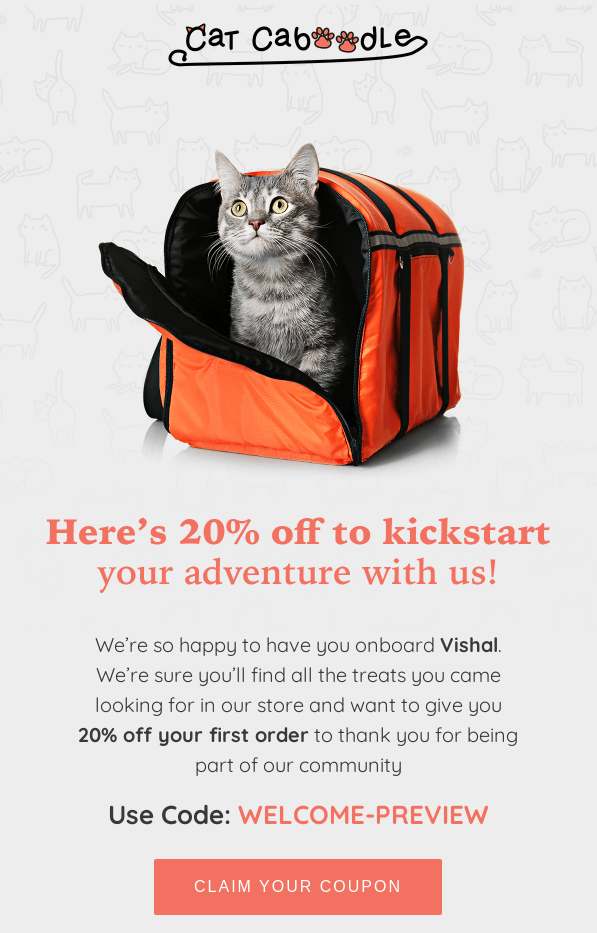
Source: Really Good Emails
There are two main reasons why I thought this email was worth flagging up:
- That’s a great cat; and
- The copywriting and structure are perfect.
Rather than yelling “SHOP NOW” after every sentence, it’s a short paragraph of copy followed by one CTA. And it’s completely obvious what that CTA is asking you to do.
9. Actively Search for Email Inspiration
Unfortunately, it’s a lot harder to keep writing engaging emails than it is to send an endless stream of HTML templates full of various types of products.
For your words to be impactful, you need to have something worth saying. Doing that multiple times a month can be tricky and requires a constant stream of ideas.
To make your life a little easier, remember to keep an eye on what your competitors are up to by signing up for their newsletters. Seen one you really like? Steal it. (Or, if you want to feel better about yourself, “replicate” it.)
Every time you see a quality piece of email copywriting, save it somewhere so you can apply it to your own campaigns when the time is right.
That’s exactly why we built a swipe file with more than 350 brilliant email examples in our team:
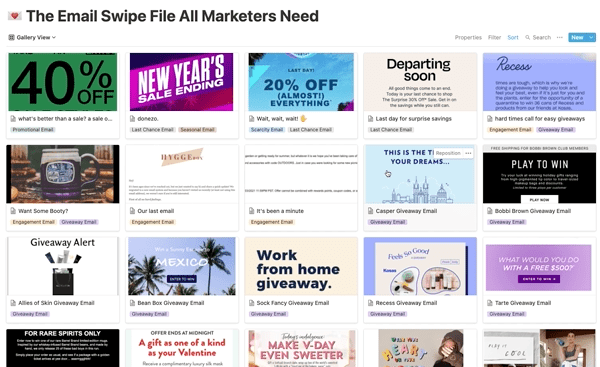
(By the way, you can get immediate access to this resource and 70+ others by clicking here.)
Other emails shouldn’t be your only source of inspiration, though.
Turn to sites and resources like Answer the Public, Quora, and Reddit, where you can learn what topics people are discussing and asking about.
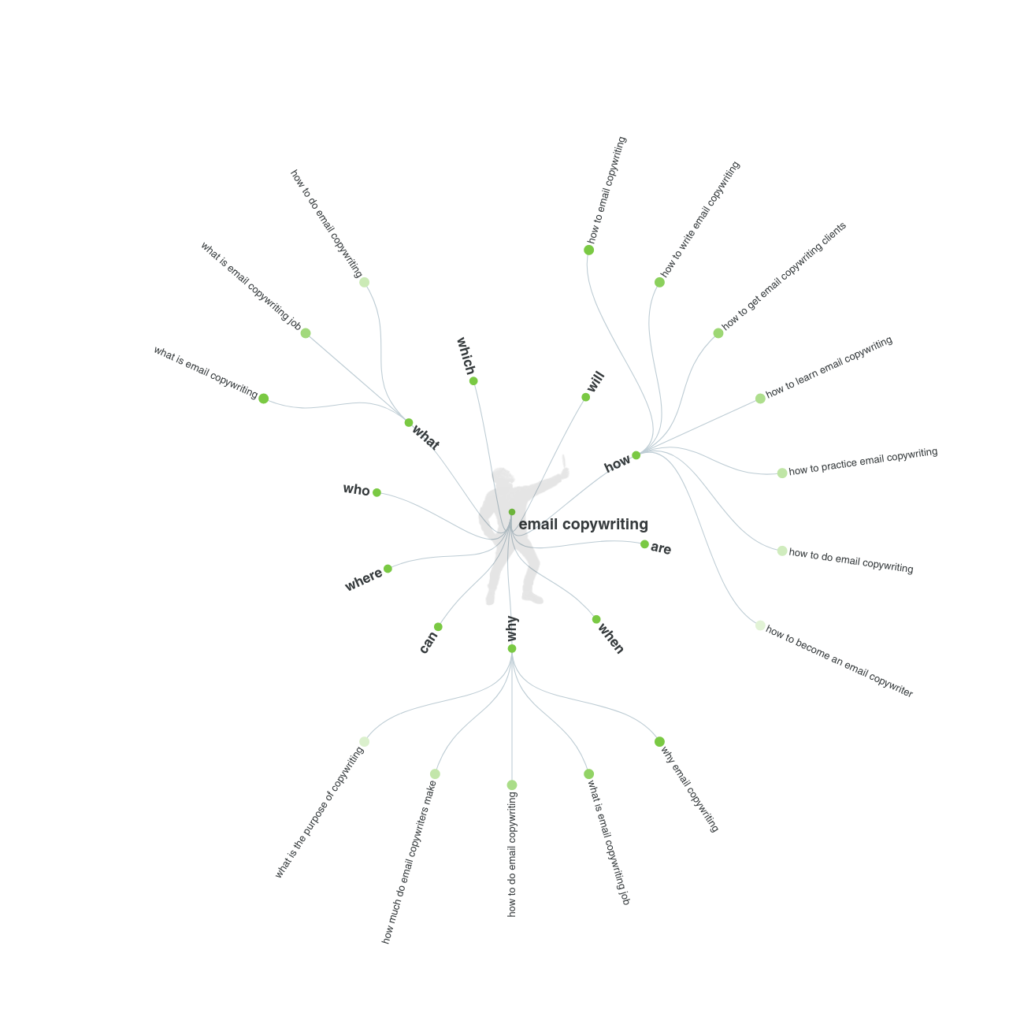
When you find key issues that apply to your audience, write about them in your emails.
As a final tip, try using headline generators to come up with potential themes. They won’t provide any context, but they’re a great starting point.

Conclusion
Want to know my favorite thing about email marketing?
It’s the price. Email is just so cheap.
Not because I’m a penny-pinching miser, but because I love how the comparatively low cost of email makes it easier (and less stressful) to experiment than you would with a big-budget Facebook ad campaign.
If you try something new with your email copywriting and it falls flat, don’t worry. As long as you’re not offending people and prompting everyone to unsubscribe, you should feel pretty free to make mistakes.
And mistakes are the best way to learn which copywriting techniques work best for your audience.



